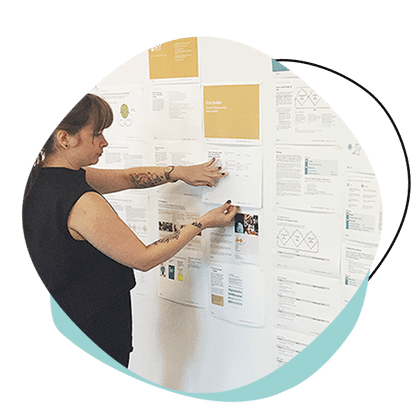ServiCe design
How we used co-design to save the health system $400,000 per month
We worked in collaboration with The Health Alliance (a joint initiative between Metro North Health and Brisbane North PHN) to design and implement a pilot program to reduce presentations to the emergency department (ED) at Caboolture hospital in Queensland. The pilot is now being scaled and rolled out to deliver similar benefits to other hospitals.
Benefits delivered so far include:
- 75% reduction in target client ED presentation
- 450% return of the funding invested
- $1800 saving per client per month, which translates to $400,000 savings to the health system per month
- Potential for saving billions if applied to public hospitals across the country.
The challenge
Our goal was to reduce demand on emergency departments by focussing on a targeted cohort of patients with chronic and complex health conditions. Data showed this cohort to be overrepresented in presentations to ED for conditions deemed non-urgent, putting pressure on an already stretched health system.
How we tackled it
We used a rapid co-design process working with patients, hospital staff, GP clinics and support services to understand the challenges and generate possible solutions.
In semi-structured interviews we used ‘natural inquiry’ to understand behaviours, mindsets and the way people currently navigate and manage chronic health diagnosis.
Co-design and testing sessions generated multiple solutions, 14 of which we mocked up and tested, with 5 concepts refined and shortlisted. A single concept was taken forward to pilot successfully at Caboolture hospital emergency department, and now at Redcliffe.

The solution: Complex Care Coordinators in GP clinics
The successful pilot, The Care Collective, funded Complex Care Coordinators to spend the time with patients in General Practice Clinics to ensure they understand what’s going on, and support them to navigate the health system and all the service providers. They perform less of a clinical role and more a collaborative one, being a lynchpin between all the different services, and considering broader social and not just medical care needs.
Impact
The 12-month pilot in Caboolture hospital reduced emergency department presentations by the target clients by 75% and returned 450% of the funding invested. That translates into $400,000 of savings per month by the health system - money well spent indeed.
This shows how investing a small amount in co-design and adopting a test-and-learn approach can de-risk investment and save critical dollars.
Client stories demonstrated the program had broader impact too, including:
- Improved patient satisfaction, understanding and confidence in accessing chronic disease management in the community.
- Better connections and access to appropriate, safe, high-quality services.
- Better utilisation of limited healthcare resources.
- Improved information sharing, collaboration and integration of providers and services around the patient.
Following on from the success at Caboolture, the team received funding to expand the program to Redcliffe. This program is now being piloted.
This work has also gone on to inform Commonwealth Department of Health and Aged Care initiatives. If implemented more widely, the potential savings to the health system could stretch into billions.
Would you like to discuss how we can help you solve your organisation’s challenges?
Related case studies

Capability building
Growing HCD capability across Queensland Government
A collaborative approach, fit-for-purpose toolkit and capability building framework increased awareness and uptake of human-centred design practices across Queensland Government.

